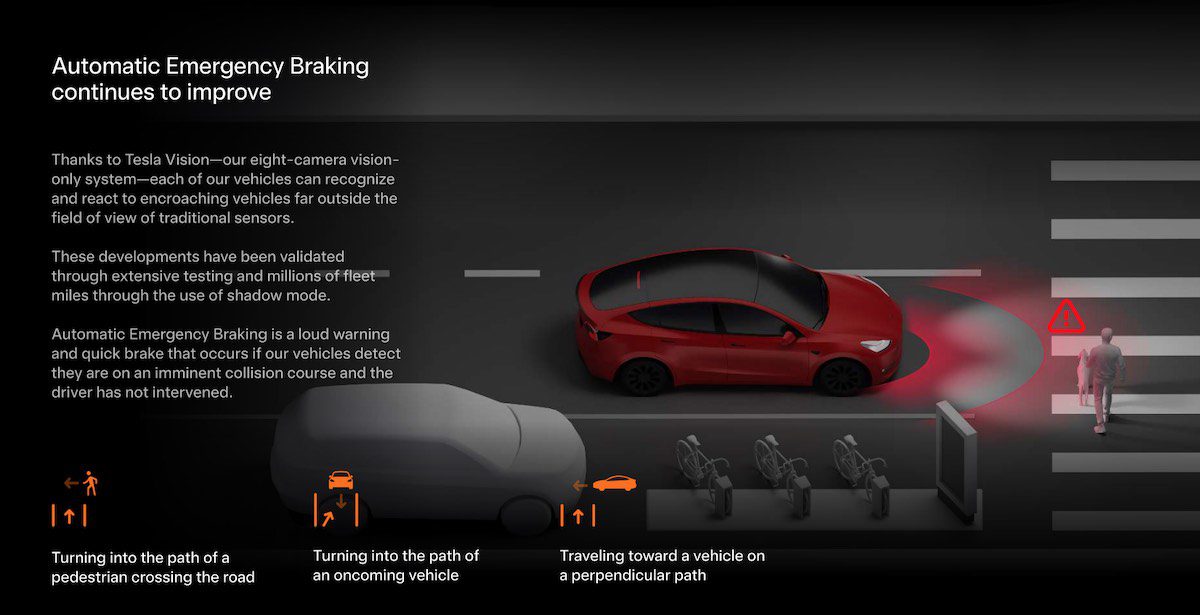Electric vehicle giant Tesla says its accident rate with Autopilot engaged is just a fraction of the industry average in the US.
New data released in its Impact Report show that Tesla vehicles with Autopilot engaged (mostly highway miles) had just 0.18 accidents per million miles driven, compared to the US vehicle average of 1.53 accidents per million miles.
Teslas on non-highways with Full Self Driving (FSD) engaged had just 0.31 accidents per million miles representing an 80% reduction in accidents compared with the average vehicle. Tesla vehicles with no active safety triggered – neither Autopilot of FSD – had an accident rate of 0.68, less than half the total US vehicle fleet.

The company also illustrated how automatic emergency braking using Tesla Vision identifies pedestrians and their direction of travel.
The vehicle’s AI software will then make a split second decision to assess the surroundings and apply emergency braking while turning away from the pedestrian.
 Automatic emergency braking. Source: Tesla Impact Report
Automatic emergency braking. Source: Tesla Impact Report
Nighttime safety
According to the impact report in 2021 US pedestrian and road-user fatalities reached their highest level ever, a 53% increase since 2012, with over 75% of those happening at night.
Tesla says all of its models received a Euro NCAP five-star rating including for nighttime pedestrian and crash avoidance.

Tesla says it collects enormous amounts of data from real-world and simulated crashes which help it to develop the structure of the vehicle as well as its collision avoidance software.
“Whether simulated or real, we can learn from any crash to help optimise the protection of the occupants and reduce the likelihood of injury,” says Tesla in the report.
“As all of our vehicles are connected, we can further leverage this philosophy by deploying new safety capabilities and improvements over-the-air as software updates.”
Crash data is so detailed that Tesla can generate heatmaps showing the precise point and size of impacts

Injury studies
Tesla also uses detailed data on injuries to develop its seatbealts and airbag system.
“We leverage our ever-growing data set to help ensure occupants receive the best possible restraints (such as seatbelts and airbags) for the impact they are involved in, and design innovative restraint systems for the future,” says Tesla in the report.
“Our safety analysis engineers evaluate through simulation studies to enhance our understanding of the complex impacts that occur in the field.”
The passenger facing camera inside the car as well as weight sensors in the seats determine the passengers’ size, weight and position and synchronise the firing of various airbags to optimise the the system in real time during a crash.
Tesla says that as its crash data grows with its growing fleet the system will continue to improve even further.
“The study of injuries has been accelerated by the creation of automated data pipelines and by leveraging machine learning to analyse large data sets. As the capability of driver assistance advances, the nature of the crash exposure to our fleet will change.”

Daniel Bleakley is a clean technology researcher and advocate with a background in engineering and business. He has a strong interest in electric vehicles, renewable energy, manufacturing and public policy.

